聚合物基压电复合材料研究进展
2017-02-22刘欣然
刘欣然
(河北工业大学 高分子科学与工程研究所, 天津 300130)
聚合物基压电复合材料研究进展
刘欣然
(河北工业大学 高分子科学与工程研究所, 天津 300130)
聚合物基压电复合材料是一种综合性能优异的新型压电复合材料,受到了人们的广泛关注。由于其采用聚合物作为基体材料,从而具有良好的柔顺性,且提高了器件结构的可设计性,弥补了传统压电材料的短板,拓展了适用范围。目前,聚合物基压电复合材料已经在很多领域得到了重要应用,随着其性能的不断提高和制备工艺的发展,其应用领域将进一步扩展,必将成为压电聚合物和压电陶瓷理想的替代材料。本文对近期聚合物基压电复合材料的研究进展进行了综述,并对其发展趋势进行了展望。
聚合物基; 压电复合材料; 研究进展
1 简介
某些电介质在一定方向受到外力作用而形变时,内部会产生极化,同时在其两个相对的表面上出现正负电荷,这种现象称为压电效应[1],这类能够产生压电效应的材料称为压电材料。1880年,法国物理学家J.Curie 和P.Curie发现,当对石英晶体施加压力后,其表面会产生电荷,电荷量与压力成正比。从而发现了压电效应。Lippmann采用热力学方法,应用能量守恒和电量守恒定律,预言了逆压电效应的存在。随后,J.Curie 和P.Curie两人通过实验验证了逆压电效应。压电效应的机理是:当压电材料受到压力而发生形变时,内部晶胞随之发生形变,其中的正负离子的相对位移使正负电荷中心不再重合,导致晶体发生宏观极化,所以压电材料受压力作用形变时两端面会出现异号电荷。反之,压电材料在电场中极化时,会因正负电荷中心的位移导致材料发生宏观变形,即逆压电效应。应用压电效应和逆压电效应均可表征材料的压电性能。按照压电效应的定义,对材料加外力,测量产生的电荷数,这时候压电系数的单位为C/ N;而对材料加载电压,测量震动的位移时得到压电系数的单位为m/V,此时应用的是逆压电效应。
经过一百多年的发展,不同类型的压电材料相继出现。如压电晶体、压电陶瓷、压电聚合物和压电陶瓷/聚合物复合材料等。自1969年Kawai首先发现了聚偏氟乙烯(PVDF)的压电特性后[2],研究证实,绝大多数聚合物经过极化处理后,都会呈现一定程度的压电性[3]。但是,压电系数(d)达到10-12C/N数量级的聚合物种类并不多[4],常见压电聚合物性能如下表[5]。

表1.常见压电聚合物压电系数Table 1. Piezoelectric coefficient of typical piezoelectric polymers

聚丙烯腈d31=1聚碳酸酯d31=0.5聚(偏腈乙烯-醋酸乙烯) d31=7聚(偏腈乙烯-苯乙烯) d31=5聚氯乙烯d31=1聚甲基丙烯酸甲酯d13=0.43聚乙烯(浇铸膜) d12=0.007注:同一聚合物材料在不同的制样和极化条件下压电常数会略有不同。
由于广泛应用的铅基压电陶瓷如Pb(Zr,Ti)O3(PZT)、Pb(Mg,Nb)O3(PMN)等具有一定的毒性, 近年来对新型无铅压电陶瓷(如BiFeO3、KNbO3、(Bi,Na)TiO3、(Bi,Li)TiO3、(Bi,K)TiO3、K(Nb,Mn)O3、(K,Na,)NbO3、(Li,K,Na)(Nb,Ta)O3、(Ba,Ca,)(Ti,Zr,)O3等[6-11]的研究逐渐增多。尽管无铅压电陶瓷在无毒的同时,保持或提高了压电陶瓷的压电系数,但同样存在着易碎、密度大和耐久性差等缺点,限制了其应用范围。虽然压电聚合物的压电性能不及大多数压电晶体和压电陶瓷,但由于其良好的柔韧性、易于加工成型、介电强度高、去极化电场高、密度低以及声阻抗低等特点,不但使其在某些应用领域可与压电晶体和压电陶瓷竞争,而且在制造柔性、大面积膜状及复杂结构的压电器件方面相对于脆性的压电晶体和压电陶瓷优势明显[12],拓展了压电材料的应用范围。
自1978年R.E.Newnham[13]首次提出压电陶瓷/聚合物复合材料的概念以来,聚合物基压电复合材料因其优异的综合性能,越来越受到人们的关注。聚合物基压电复合材料是将压电陶瓷材料或其他功能性填料以一定的工艺与压电聚合物材料进行共混,制备出的具有不同结构的压电复合材料。根据两相连通方式的不同可分为十个基本类型[14],即0-0型连通、0-1型连通、0-2型连通、0-3型连通、1-1型连通、1-2型连通、1-3型连通、2-2型连通、2-3型连通和3-3型连通的压电复合材料,第一个数字代表压电陶瓷或功能性填料的连通维度,第二个数字代表聚合物的连通维度[15]。常见的复合材料基体选用聚偏氟乙烯(PVDF)、聚酰胺(PA)、环氧树脂(EP)和有机硅聚合物(SI)等,其中以PVDF最为常见。
2 聚合物基压电复合材料研究进展
2.1 PVDF基压电复合材料
聚偏氟乙烯(PVDF)分子极性强,具有优良的压电性能、力学性能且化学性质稳定,是目前为止压电性能最强的聚合物,因此成为研究最为广泛的压电聚合物。PVDF存在α、β和γ三种晶型,其中β晶型显示出压电性能[16-18]。通过共混加入特定成核剂或改变复合材料的热处理工艺,可以提高复合材料中β晶型PVDF的含量,从而提高压电性能。F.Mokhtari[19]在PVDF中加入氯化锂(LiCl),同时提高电纺过程中集电极鼓的转速,从而提高了β晶型的含量,改善了PVDF电纺纤维的压电性能。在氯化锂用量为0.00133wt%时,β晶型的含量达到峰值。Kuntal Maity等人[20]通过电纺法将硫化钼(MoS2)纳米片晶与PVDF进行共混,得到一种MoS2/PVDF复合纤维,研究表明:2D-MoS2纳米片晶在提高PVDF的β晶型含量同时,由于其优良的电荷存储和传导能力,提升了材料的压电性能。在外部压强为0.65Pa、0.63Pa和0.61Pa条件下,响应电压分别为0.8V、0.5V和0.3V,呈现出极高的响应灵敏度。Y.Y.Zhang[21]等人通过溶液浇铸法制备了具有不同蒙脱土(MMT)含量的PVDF/MMT复合材料。研究了MMT含量对晶体结构,形貌,介电性能,压电性能和相变机制的影响。结果表明:蒙脱土的取向几乎平行于复合膜表面,充当了有效的成核剂,促进PVDF的α晶型向β晶型转变。复合材料的介电常数和介电损耗随蒙脱土含量的增加而增加。当MMT含量达到2.0wt%时,复合材料的压电系数达到最大值(5.8×10-12C/N)。
Joon Young Im等人[22]制备了一种多壁碳纳米管(MWCNT)/PVDF纳米复合膜,研究表明:MWCNT起到了成核剂的作用,MWCNT的官能基团与PVDF分子链上产生静电作用,促进了PVDF分子链的伸直,提高了β晶型的含量,MWCNT的均匀分布有助于在MWCNT和PVDF基体界面之间的电荷积累。
Song Chen等人[23]采用聚偏氟乙烯-三氟乙烯共聚物与银纳米线通过电纺得到了P(VDF-TrFE)/纳米银线共混纤维织物(PTAN),由于纳米银线的富电子表面与P(VDF-TrFE)分子链上C-F的静电作用。P(VDF-TrFE)基体中β晶型的含量提高,增强了压电性能。制备的共混纤维织物PTAN,聚二甲基硅氧烷(PDMS)/石墨(Grp)纳米复合膜组装成为级联式的压力(PTAN部分)-摩擦(Grp/PDMS部分)纳米发电单元(HG)(图1)。当石墨用量为3.0wt%、纳米银线用量为2.0wt%时,得到了HG最高的平均输出功率(16.46μW)。
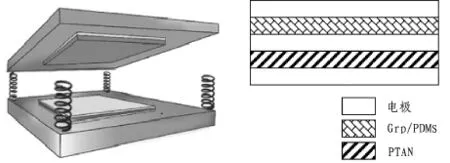
图1.HG单元结构示意图Fig1.The structure of HG
Sumanta Kumar Karan等人[24]采用PVDF与铝氧化物修饰还原氧化石墨烯 (ALO-RGO)进行溶液共混,得到了一种PVDF/ALO-RGO纳米复合膜,研究表明:ALO-RGO在复合材料中起到了β成核剂的作用。Wangshu Tong[25]等人采用1,2,4,5-四(三氟甲基)苯(TFB)修饰的还原氧化石墨烯(RGO)与偏氟乙烯-六氟丙烯共聚物P(VDF-HFP)共混,得到了一种具有压电性和电容性的RPG/P(VDF-HFP)纳米复合膜。研究表明:RGO的改性是提高纳米复合膜电容性的必要条件,当RPG用量为2.5wt%时,纳米复合膜呈现最优化的介电性能 (ε=158,tanδ=0.42@100Hz)。
压电陶瓷具有很高的压电系数,通过共混,可以提高PVDF的压电性能。Navneet Soin等人[26]制备了通过旋涂法制备了一种锡酸锌(ZHS)/PVDF纳米复合膜,并与尼龙(Nylon 6)膜组装成摩擦电发电机。当ZHS用量为5wt%时,ZHS/PVDF纳米复合膜的压电系数d33=-65×10-12m/V,相比纯PVDF膜(d33=-44×10-12m/V)提高了86%。Lijie Dong等人[27]采用热压法制备了一种PZT/PVDF复合材料,并通过控制冷却条件得到了不同晶态组成的复合材料。在不同的PVDF结晶度下PZT/PVDF复合材料呈现出不同的介电、压电性能。当PVDF的结晶度为21%时,复合材料呈现出高介电常数(ε=165)和低的介电损耗(tanδ=0.03@10Hz),当PVDF的结晶度达到34%,复合材料的压电系数(d33)可高达100×10-12C/N。Sara Dalle Vacche等人[28]将BaTiO3(BT)粒子与P(VDF-TrFE)共混制膜,通过对BT/P(VDF-TrFE)复合膜的压电性能的研究发现,BT粒子表面改性后,复合膜的压电系数有所提高,说明BT粒子与P(VDFTrFE)基体间界面作用对复合膜的压电系数有所影响。
2.2 尼龙基压电复合材料
奇数的聚酰胺具有高偶极矩的酰胺基团同时,还具有特殊的氢键结构,是一种压电性较强的结晶性聚合物。Jean-Fabien Capsal[29]等人采用溶剂浇铸法制备了一种BaTiO3(BT)/尼龙11(PA11)压电复合材料,随BT纳米粒子用量的增加,BT/PA11压电复合材料的压电系数呈线性增长。当用量为10vol%时,压电复合材料综合性能最佳。随后,他们[30]又对BT纳米粒子尺寸对BT/PA11压电复合材料性能的影响进行了研究,当用量为12vol%时,随着粒径的减小,基体中非晶相的比例随之减少。在0.1Hz条件下,压电复合材料在BT粒子粒径为300nm时的介电常数是100nm时的10倍。
Atitsa Petchsuk[31]等人制备了一系列的PZT/PA57复合材料,研究发现:PZT/PA57复合材料的压电系数随PZT颗粒尺寸增大而增加。当PZT颗粒尺寸为95μm时,复合材料的相对介电常数(73)和压电系数(d33=28×10-12C/N)达到最佳。
2.3 环氧树脂基压电复合材料
环氧树脂(EP)种类多样,对非金属材料的表面具有优异的粘接强度,介电性能良好,制品尺寸稳定性好。尤其是其成型过程为双组份反应固化,可以通过工艺设计,制备结构更为复杂的聚合物基压电复合材料,受到研究者的广泛关注。
Nijesh K.James[32]通过采用电泳工艺,使(K,Na,Li)NbO3(KNLN)粒子在EP基体固化过程中形成了一维链状聚集形态(图2(a),(b))。经比较,当KNLN与PZT用量同为10vol%时,KNLN/EP复合材料的压电常数(d33=13×10-12C/N)是PZT/EP(d33=5.5×10-12C/N)的两倍。
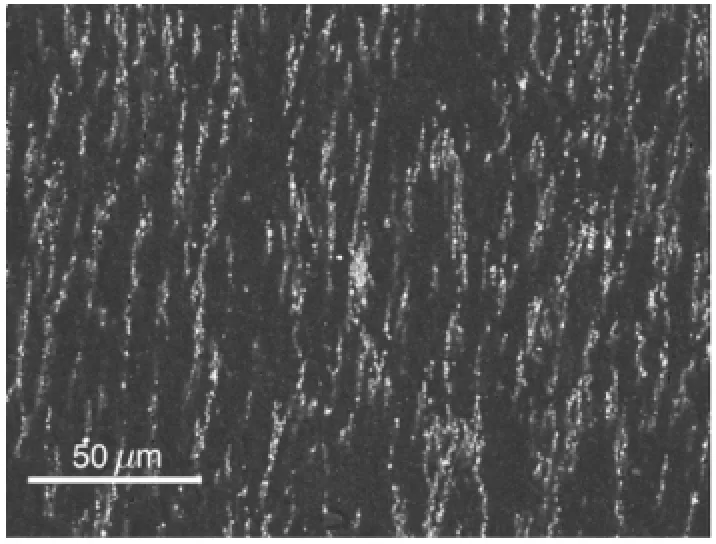
图2(a).KNLN/EP(10 vol%)复合材料扫描电镜照片Fig 2(a). A SEM image at 10 vol%
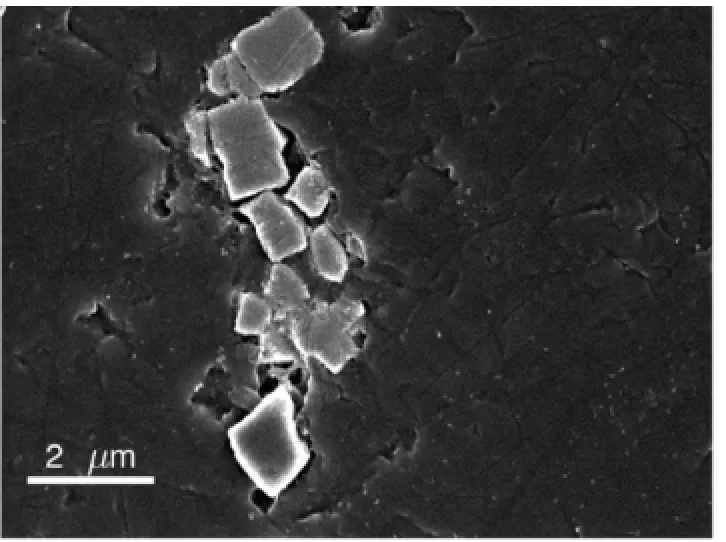
图2(b).复合物中KNLN聚集链扫描电镜形态Fig 3(b). A magnified SEM image of a single KNLN column.
Qingqing Lu等人[33]采用一种镍-钛形状记忆材料(SMA)与EP进行共混,在对复合材料动态响应和输出电压的研究发现,温度由25℃提高至45℃过程中,SMA/EP复合材料的响应频率随之升高(39.4Hz-41.8Hz)。
Jibran Khaliq[34]等人研究了不同PZT粒子对PZT/EP复合材料压电性能的影响。研究表明:PZT粒子的在对复合材料压电性能起到及其重要的作用,在复合材料的极化过程中具有相对较低介电常数的PZT粒子在基体中能够更好的极化取向,从而提高复合材料的整体压电性能。
Wei Wang等人[35]采用割模-浇铸法制备了一种1-3型Pb(In1/2Nb1/2)O3-Pb(Mg1/3Nb2/3)O3懶PbTiO3(PIMNT)/EP压电复合材料。在PIMNT用量为60vol%时,得到了较高压电系数 (d33=1256×10-12C/N)和较低声阻抗(Z=19MRayls)的压电复合材料。
Nan Chen[36]采用轧膜-卷曲成型工艺制备了一种螺旋结构的(Ba0.85Ca0.15)(Zr0.1Ti0.9)O3(BCZT)/EP压电复合材料(图3)。随着BCZT用量的增加,复合材料的介电常数和声阻抗近乎线性增长,当用量为30 vol%时,复合材料的压电系数达到最大值 (dh=286×10-12C/N) 。
2.4 有机硅聚合物基压电复合材料
分子结构中含有硅原子的有机聚合物的总称。可在-100-300℃范围内长期使用,可有效提高聚合物基压电复合材料的居里点温度,拓展其应用范围。Xin Cui等人[37]对比了聚二甲基硅氧烷(PDMS)和聚甲基丙烯酸甲酯(PMMA)两种聚合物基体对PZT聚合物基纳米复合材料压电性能的影响。研究发现:PZT/ PDMS的输出电压较PZT/PMMA提高了10%。
Dong-Jin Shin 等人[38]制备了块状(Bulk)和柱状(Pillar)不同形态的多层PMN-PZT/PDMS压电复合膜,研究发现随着层数的增加,压电系数和输出电压呈现近乎线性增长(图4)。
Chang Kyu Jeong[39]采用自制的碱金属铌酸盐(KNLN)纳米颗粒、铜纳米棒(Cu NRS)和PDMS,通过旋涂法制备了一种柔性压电纳米复合膜KNLN-Cu NRS/PDMS,Cu NRS在复合膜中起到纳米电桥的作用,提高了输出性能。当KNLN、Cu NRS和PDMS质量比为2:1:10时,复合材料的综合性能达到最优,输出电压为12V。
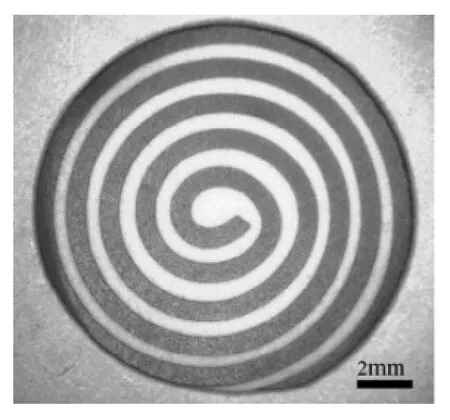
图3.BCZT/EP复合材料显微照片Fig 3. OM image of BCZT/EP composite
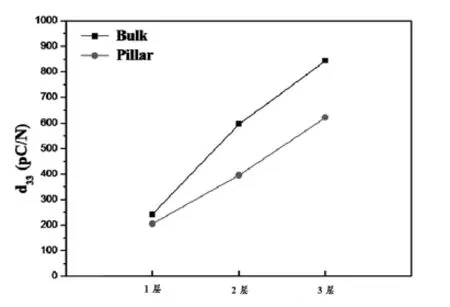
图4.块状(Bulk)和柱状(Pillar) PMN-PZT/PMDS复合膜的压电常数随层数变化曲线Fig 4. Piezoelectric coefficient d33 of the bulk- and pillar-type ceramic迺polymer composite structures with respect to the number of layers.
3 展望
聚合物基压电复合材料兼具有机高分子材料的柔韧性、良好的机械性能和易加工性等优点及无机压电材料优异的压电性能,已获得广泛应用。由于PVDF优异的压电性能,在目前的研究中被广泛采用。环氧树脂基压电复合材料在制备复杂结构压电器件上具有明显优势。未来的趋势是开发压电系数、居里点温度更高的聚合物压电复合材料。有机硅聚合物具有非常优良的柔韧性、价格低廉、便于加工,可在更大温度范围内长期使用,有机硅聚合物基压电复合材料必将成为未来研究的热点。
[1]张福学,王丽坤.现代压电学[M].北京:科学出版社,2002:30.
[2]Heiji Kawai. The piezoelectricity of poly (vinylidene fluoride)[J]. Japanese Journal of Applied Physics, 1969(7):975.
[3]R. Hayakawa, Y. Wada. Piezoelectricity and related properties of polymer films[J]. Advances in Polymer Science, 1973 .11:1-55.
[4]Andrew J. Lovinger. Ferroelectric Polymers[J]. Science, 1983, 220(4602): 1115-1121.
[5]欧阳萌, 龚克成. 压电高分子材料[J]. 高分子通报, 1993, 6(2): 105-107.
[6]Jianguo Chen , Jinrong Cheng. High electric-induced strain and temperature-dependent piezoelectric properties of 0.75BF-0.25BZT lead-free ceramics[J]. Journal of The American Ceramic Society, 99(2): 536-542.
[7]Dae-Hyeon Kim, Mi-Ri Joung, In-Tae Seo, Joon Hur, Jong-Hyun Kim, Bo-Yun Kim, Hwack-Joo Lee, Sahn Nahm, Low-temperature sintering and piezoelectric properties of CuO-Added KNbO3 ceramics[J]. Journal of The American Ceramic Society, 97(12): 3897-3903.
[8]Gyoung-Ja Lee, Byung-Hoon Kim, Sun-A Yang, Jin-Ju Park, Sang-Don Bu and Min-Ku Lee, Piezoelectric and ferroelectric properties of (Bi,Na) TiO3-(Bi,Li)TiO3-(Bi,K)TiO3 ceramics for accelerometer application[J]. Journal of The American Ceramic Society, doi:10.1111/jace.14614.
[9]Jong-Hyun Kim, Dae-Hyeon Kim, Tae-Ho Lee, Tae-Gon Lee, Ji-Hyun Lee, Bo-Yun Kim, Sahn Nahm, Chong-Yun Kang, Jungho Ryu. Large electrostrain in K(Nb1-xMnx)O3 lead-free piezoelectric ceramics[J]. Journal of The American Ceramic Society, doi:10.1111/jace.14469.
[10]Henry Mgbemere, Gerold Schneider, Markus Hoelzel, Manuel Hinterstein. Neutron diffraction study of (KxNa1-x)NbO3-based ceramics from low to high temperatures[J]. Journal of Applied Crystallography, 49(3): 891-901.
[11]Indrani Coondoo, Neeraj Panwar, Harvey Amorín, Venkata Eskilla Ramana, Miguel Algueró, Andrei Kholkin, Enhanced piezoelectric properties of praseodymium-modified lead-free (Ba0.85Ca0.15)(Ti0.90Zr0.10)O3 ceramics[J]. Journal of The American Ceramic Society, 98(10): 3127-3135.
[12]Ya Yang, Jong Hoon Jung, Byung Kil Yun, Fang Zhang, Ken C. Pradel, Wenxi Guo, Zhong Lin Wang. Flexible pyroelectric nanogenerators using a composite structure of lead-free KNbO3 nanowires[J]. Advanced Materials. 2012, 24(39):5357-5362.
[13]R. E. Newnham, D. P. Skinner, L. E. Cross. Connectivity and piezoelectric pyroelectric composites[J], Materials Research Bulletin, 1978, 13(5): 525-535.
[14]R. E. Newnham, Gregory R. Ruschau. Electromechanical properties of smart materials[J]. Journal of Intelligent Material Systems and Structures 4(3):289-294.
[15]夏健珂.压电陶瓷PLZT、压电高分子PVDF膜及其复合材料的制备与性能研究[D].长春:吉林大学,2004.
[16]A.G. Holmes-Siedle, P.D. Wilson, A.P. Verrall PVdF: An electronically-active polymer for industry[J]. Materials & Design 1984, 4(6): 910-918.
[17] Chieh Chang, Van H. Tran, Junbo Wang, Yiin-Kuen Fuh, Liwei Lin. Direct-write piezoelectric polymeric nanogenerator with high energy conversion efficiency[J]. Nano Letters, 2010, 10(2): 726-731.
[18]Walter Heywang, Karl Lubitz, Wolfram Wersing. Piezoelectricity: Evolution and Future of a Technology[M].北京:北京大学出版社,2012.
[19]F. Mokhtari, M. Shamshirsaz, M. Latifi. Investigation of β phase formation in piezoelectric response of electrospun polyvinylidene fluoridenanofibers: LiCl additive and increasing fibers tension[J]. Polymer Engineering & Science. 2016, 56(1): 61-70.
[20]Kuntal Maity, Biswajit Mahanty, Tridib Kumar Sinha, Samiran Garain, Anirban Biswas,Sujoy Kumar Ghosh, Smarajit Manna, Samit K. Ray, Dipankar Mandal. Two-dimensional piezoelectric mos2-modulated nanogenerator and nanosensor made of poly(vinlydine fluoride) nanofiber webs for self-powered electronics and robotics[J]. Energy Technology, doi: 10.1002/ente.201600419.
[21]Y. Y. Zhang, S. L. Jiang, Y. Yu, G. Xiong, Q. F. Zhang, G. Z. Guang. Phase transformation mechanisms and piezoelectric properties of poly(vinylidene fluoride)/montmorillonite composite[J]. Journal of Appiled Polymer Science, 2012, 123(55): 2595-2600.
[22]Joon Young Im, Sehyun Kim, Hyoung Jin Choi, Yongsok Seo. Effect of elongational deformation on the β-phase formation of poly(vinylidene fluoride)/multiwalled carbon nanotube composites and their piezoelectric properties[J]. Macromolecular Symposia, 2014, 346(1): 7-13.
[23]Song Chen, Xiaoming Tao, Wei Zeng, Bao Yang, Songmin Shang. Quantifying Energy harvested from contact-mode hybrid nanogenerators with cascaded piezoelectric and triboelectric units[J]. Advanced Energy Materials, doi:10.1002/aenm.201601569.
[24]Sumanta Kumar Karan, Ranadip Bera, Sarbaranjan Paria, Amit Kumar Das, Sandip Maiti, Anirban Maitra, Bhanu Bhusan Khatua. An Approach to Design Highly Durable Piezoelectric nanogenerator based on self-poled PVDF/AlO-rGO flexible nanocomposite with high power density and energy conversion efficiency[J]. Advanced Energy Materials, doi: 10.1002/aenm.201601016.
[25]Wangshu Tong, Yihe Zhang, Qian Zhang, Xinglong Luan, Fengzhu Lv, Leipeng Liu, Qi An. An All-Solid-State Flexible piezoelectric high-k film functioning as both a generator and in situ storage unit[J]. Advanced Functional Materials, 25(45): 7029-7037.
[26]Navneet Soin, Pengfei Zhao, Kovur Prashanthi, Jinkai Chen, Peng Ding, Erping Zhou, Tahir Shah, Sekhar C. Ray, Christos Tsonos, Thomas Thundat, Elias Siores, Jikui Luo, High performance triboelectric nanogenerators based on phase-inversion piezoelectric membranes of poly(vinylidene fluoride)-zinc stannate (PVDF-ZnSnO3) and polyamide-6(PA6)[J]. Nano Energy, 2016, 30: 470-480.
[27]Lijie Dong, Rui Li, Chuanxi Xiong, Hongying Quan. Effect of heat treatment on the electrical properties of lead zirconate titanate/poly(vinylidene fluoride) composites[J]. Polymer International, 2010, 59(6): 756-758.
[28]Sara Dalle Vacche, Yves Leterrier, Véronique Michaud, Dragan Damjanovic, Arthur B. Aebersold, Jan-Anders E. Manson. Effect of interfacial interactions on the electromechanical response of poly(vinylidene fluoride-trifluoroethylene)/BaTiO3 composites and its time dependence after poling[J]. Composites Science and Technology, 2015, 114(19): 103-109.
[29]Jean-Fabien Capsal, Eric Dantras, Jany Dandurand, Colette Lacabanne. Electroactive influence of ferroelectric nanofillers on polyamide 11 matrix properties[J]. Journal of Non-Crystalline Solids, 2007, 353(47-51): 4437-4442.
[30]Jean-Fabien Capsal, Eric Dantras, Jany Dandurand, Colette Lacabanne. Molecular mobility in piezoelectric hybrid nanocomposites with 0-3 connectivity: Particles size influence[J]. Journal of Non-Crystalline Solids, 2011, 357(2): 587-593.
[31]Atitsa Petchsuk, Wilairat Supmak, Aree Thanaboonsombut. Effects of size of spray-dried PZT powder and dipole density of polymer matrix on the electrical properties of PZT/Odd-Odd Nylons 0-3 composites[J]. Journal of the American Ceramic Society, 2011, 94(7): 2126-2134.
[32]Nijesh K. James, Daniella B. Deutz, Ranjita K. Bose, Sybrand van der Zwaag, Pim Groen. High piezoelectric voltage coefficient in structured leadfree (K,Na,Li)NbO3 particulate-epoxy composites[J]. Journal of the American Ceramic Society. doi:10.1111/jace.14428.
[33]Qingqing Lu, Liwu Liu, Xin Lan, Yanju Liu, Jinsong Leng. Dynamic responses of SMA-epoxy composites and application for piezoelectric energy harvesting[J]. Composite Structures. 2016, 153: 843-850.
[34]Jibran Khaliq, Daniella Bayle Deutz, Jesus Alfonso Caraveo Frescas, Peter Vollenberg, Theo Hoeks, Sybrand van der Zwaag, Pim Groen. Effect of the piezoelectric ceramic filler dielectric constant on the piezoelectric properties of PZT-epoxy composites[J]. Ceramics International. 2016, doi:10.1016/ j.ceramint.2016.11.108.
[35]Wei Wang, Siu Wing Or, Qingwen Yue, Yaoyao Zhang, Jie Jiao, Bo Ren, Di Lin, Chung Ming Leung, Xiangyong Zhao, Haosu Luo, Cylindrically shaped ultrasonic linear array fabricated using PIMNT/epoxy 1-3 piezoelectric composite[J]. Sensors and Actuators A: Physical, 2013, 192: 69-75.
[36]Nan Chen, Weibing Ma, Mingyang Wang, Yaoxian Guo, Na Li. Fabrication and investigation of BCZT/epoxy lead-free piezoelectric composites with spiral structure[J]. Journal of Alloys and Compounds. 2015, 646: 592-596.
[37]Xin Cui, Xia Ni, Yan Zhang. Theoretical study of output of piezoelectric nanogenerator based on composite of PZT nanowires and polymers[J]. Journal of Alloys and Compounds, 2016, 675: 306-310.
[38]Dong-Jin Shin, Woo-Seok Kang, Jung-Hyuk Koh, Kyung-Ho Cho, Chang-Eui Seo, Sang-Kwon Lee. Comparative study between the pillar- and bulk-type multilayer structures for piezoelectric energy harvesters[J]. Physica Status Solidi(a), 2014, 211(8): 1812-1817.
[39]Chang Kyu Jeong, Kwi-Il Park, Jungho Ryu, Geon-Tae Hwang, Keon Jae Lee. Large-area and flexible lead-free nanocomposite generator using alkaline niobate particles and metal nanorod filler[J]. Advanced Functional Materials, 2014, 24(18): 2620-2629.
Research Progress on Polymer-based Piezoelectric Composites
LIU Xin-ran
(Institute of Polymer Science and Engineering, Hebei University of Technology, Tianjin 300130, China)
In recent years, polymer-based piezoelectric composites have received extensive attention as a new kind of piezoelectric materials for its excellent comprehensive performance. By using polymer as matrix material, polymer-based piezoelectric composites have achieved good flexibility and improved designability of device structure. It has also made up the deficiency of the piezoelectric ceramic materials on the mechanical properties and expanded its application domain. At present, applications of this kind of piezoelectric materials in various fields have been reported, which will continue to expand, with the development of its preparation process and performance improvement. Polymer-based piezoelectric composites will become an ideal replacement of piezoelectric ceramic and piezoelectric polymer materials. In this paper, the recent research on polymer-based piezoelectric composites has been summarized, and the development trend also are predicted.
polymer-based; piezoelectric composites; research progress
TB381
A
2095-3763(2017)-0123-06
10.16729/j.cnki.jhnun.2017.01.020
2016-12-07
刘欣然(1985- ),男,河北承德人,河北工业大学高分子科学与工程研究所助理研究员,硕士,研究方向为聚合物基复合材料和多相多组分聚合物体系。
